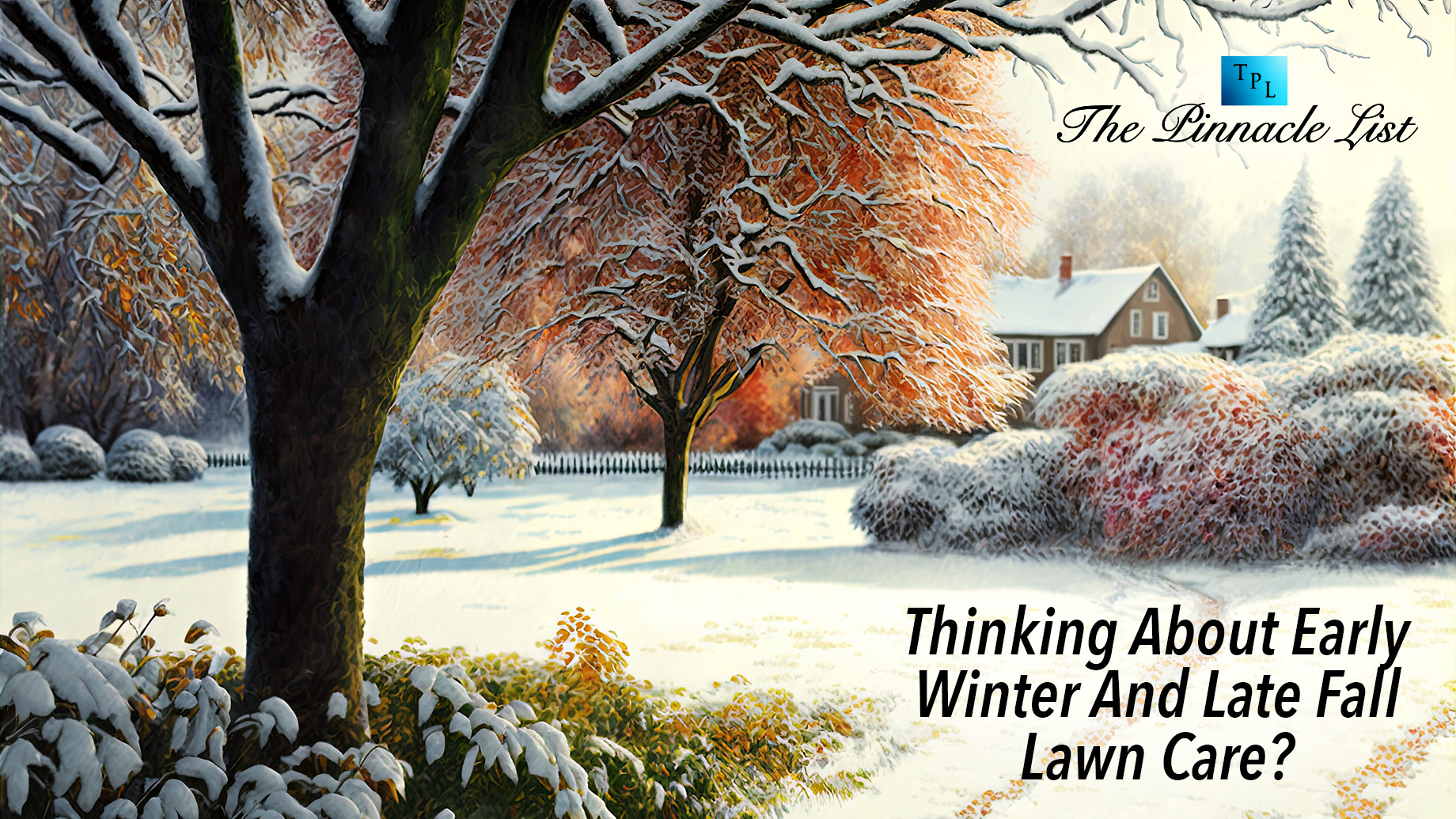
The leaves might have gone! But that doesn’t mean you need to give up on your lawn. You must devote the most care and attention to your lawn between early winter and late fall. It would help if you looked at every aspect, from fertilization to securing the most vulnerable plants.
There are several things that you can do to mend your lawn. To know more, you can check out Think Lawn and get the relevant ideas. That aside, here are a few things you must do to make the most of your lawn:
Keep watering the lawn
Until the ground freezes, you should water the plants and the lawn to ensure that the moisture level is balanced. The other suggested way to ensure that the garden beds have ample moisture is to say yes to mulching. Hence, all you have to do is install a mulch layer in the garden bed.
And by this, you will have to ensure that the perineal plants don’t get dried during the winter. You also have access to multiple organic materials that you can make use of. It could be anything from shredded leaves, wood chips, straw, compost, or grass clippings. You need to be aware of the pros and cons of each one. You need to ask the lawn care service provider for the best for the lawn.
Wind-proof the lawn
Wrapping the bigger shrubs and perennials, or even the small ornamental trees, in the burlap can help to mitigate the winter burn. It is one condition that will arise when the plants get exposed to dry, cold wind.
You can concentrate on mowing
You can use a mower once more over the lawn right before winter. And ensure that you bag the clippings so that you can mulch them. When you bag the grass clippings, it can enable you to take up any fallen leaves that are present. No way should you leave any number of organic debris on your lawn.
Remove the leaves
It is essential to get every fallen leaf away from the grass. You could get this done by mowing, raking, or even blowing. When you leave it on your lawn, it can smother the grass and thereby generate environments that might have elements like fungi, mildew, and mold thrive.
The dig-out annuals
If you planted any annuals during the spring, you need to remove them during winter. Considering that it is perennial, it will not come back the following year. Every dead organic matter is of no good as well. It can also clutter the garden space and make it appear slightly unkempt. And for another, like the dead leaves on the lawn, every dead plant material can be the hub of pests and diseases.
You should trim the perennials
There is no need to dig out the perennials similar to the annuals. However, it would help if you trimmed it back, which will help secure it from the cold and keep away the pests.
Plant the spring bulbs
When you wish to see the tulips, daffodils, or any other flower available from the bulbs in the coming spring, ensure that you plant it now and make it a part of the gardening regime. If you plant it during the spring, you will not see the flowers for one entire year. It is because the spring-blooming bulbs are required to witness a long time of cold temperatures to start the biological process, allowing them to flower.
Fix the soil imbalances
If you find the lawn yellow, chances are it didn’t respond to fertilizer. And also that it is replete with moss or weed and also the fact that it doesn’t seem to recover even from a dry, hot summer. Here you will require a lime application. The mineral treatment here can restore the complete pH balance of the lawn and remedy the overly acidic soil. The spring and fall are the best times to get this done, as the snow and rain during last winter and fall can disseminate the lime.
Finally, it would help if you inspected for pests. Ensure you examine the shrubs, trees, and garden for specific signs of pest infestation. You can check for things such as chewed leaves and wilted grass and also keep an eye on the pests themselves. You can easily spot the scale mites on the stems of your plants. It is more so the case with fruit trees. If you feel there is a pest problem, you can manage it much better during winter. Else, the pests will survive and will be there next spring. These are a few of the preparations that are essential for competent lawn care. Get in touch with the experts today and get the needful done!